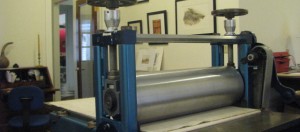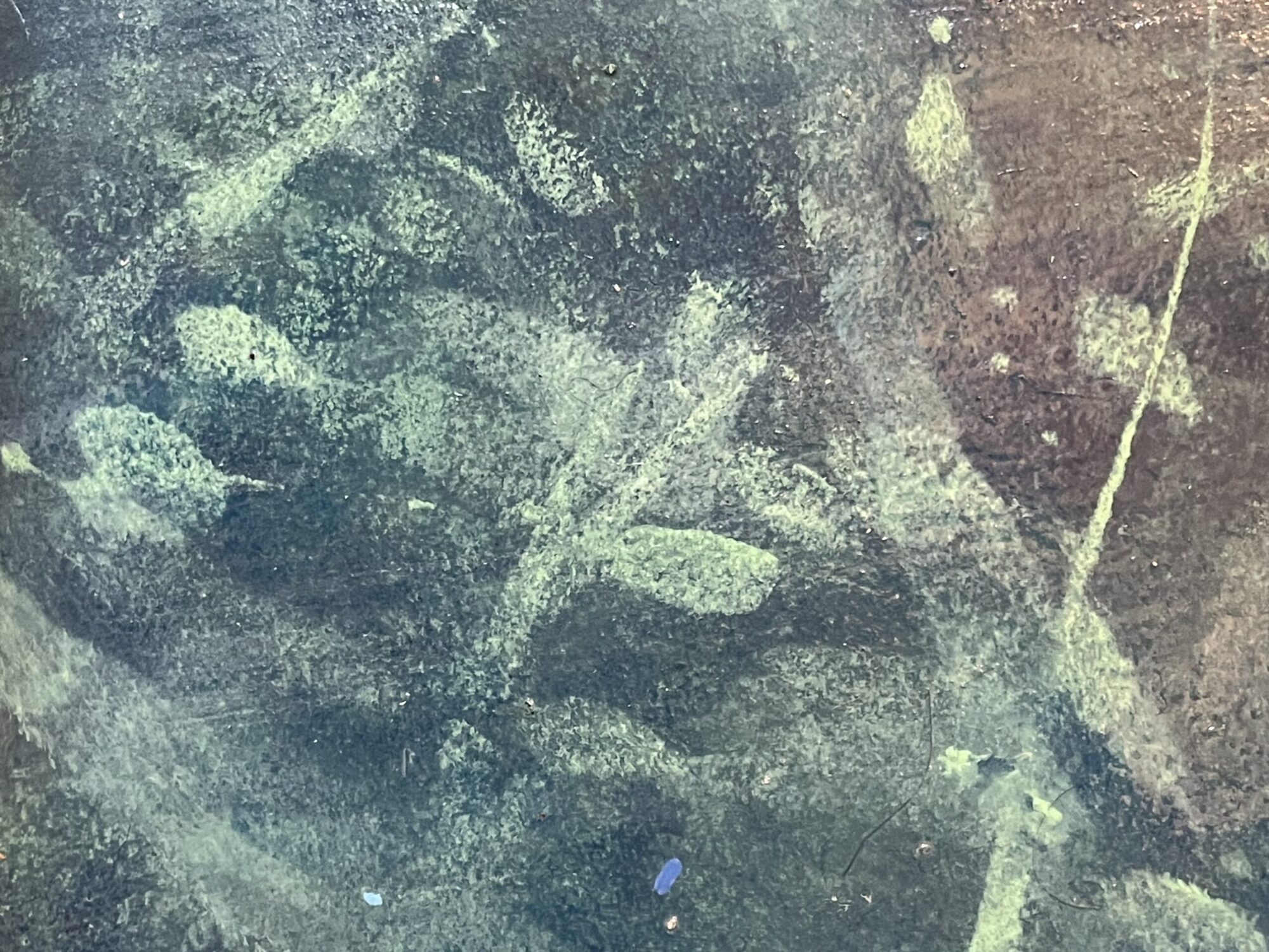
I am forever grateful to my printmaking teacher. She sold me her 28X48 bed Griffin press at a fraction of the cost of a new one. It has made the difference choosing the projects I want to undertake. Size is mostly a problem when your limited in studio space or how large can you make those prints. There are other methods, but truly a small table top press is a decent way to start working up towards a large one.
Etching, Drypoint, engraving, mezzotint, and aquatint are all classified as INTAGLIO: Italian, from intagliare- to engrave.
Etching, drypoint, engraving, aquatint. All similar, but different.The incised lines and pits on the surface on the matrix were rendered by the artist either by dipping in an acid bath, carving the surface by hand or specialized engraving tool, or coating the surface with resist to create gradients.
Inking the plate involves the artist in smoothing printmaking ink into the scratches and grooves now on the surface of the matrix, which is usually copper or zinc, sometimes bronze or aluminum. The the excess ink is removed and the plate is ready to be pulled on the press.
My favorite choice of intaglio is drypoint and engraving; both to render or view other artist’s work. For myself, it feels like freehand drawing in the beginning but with more pressure. Lots of little lines and crosshatchings are created from pulling while pressing a hand held (held like a pen- only upright) scribe across the surface into and across the prepared polished and cleaned copper plate. There are other metals that are suited to the other types of intaglio. Copper is soft and easy to work with for my purpose.
Engraving tools are slightly different from the scribes and burnishers used for drypoint. Engraving tools have edges that create a sharp clean line. The tools are also held differently and each blade performs a certain task. The electric and pneumatic engraving pens with drill bits are amazing to work with and offer yet another side to engraving.
